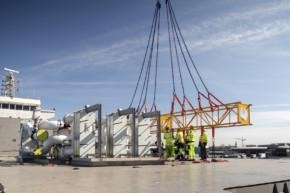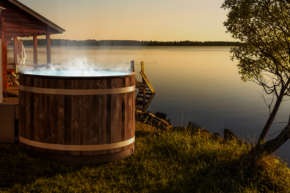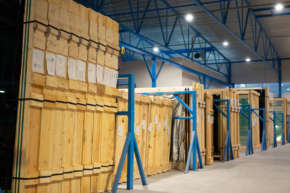In Port of Turku baby chicks are almost at their destination
The Port of Turku is an important stage for Finnish chicken and egg production. Baby chicks needed in poultry production are shipped to the country in very carefully regulated conditions.
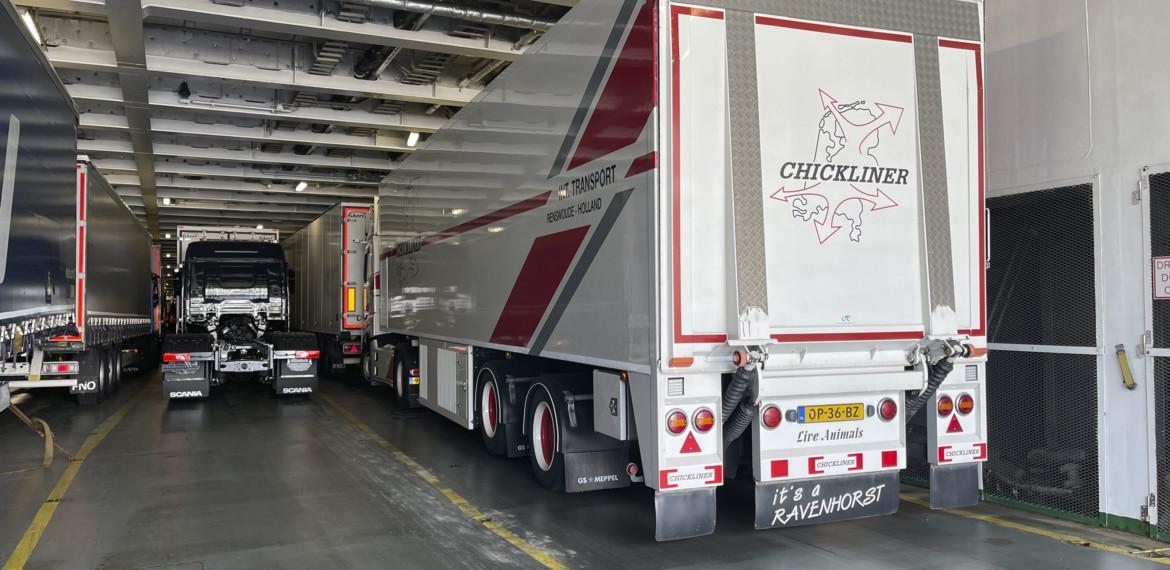
Most of the Finnish poultry production is located in the western parts of the country i.e. specifically in Southwestern Finland, Satakunta and Ostrobothnia. The trip from the Port of Turku to the farms is not long. As much as 66 per cent of Finnish eggs are produced in Southwestern Finland, and most of the country’s breeding chicken farms are also located there.
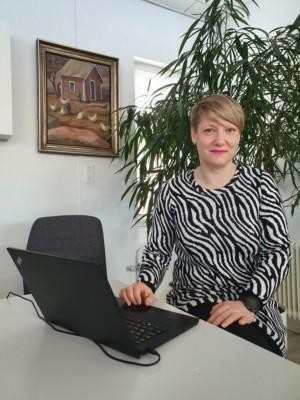
”There are only a few animal breeders in Europe. We don’t have domestic poultry breeding operations in Finland”, says Hanna Hamina, Executive Director of the Finnish Poultry Association.
The breeding hens and roosters for chicken production are imported as baby chicks mainly from Sweden through the Port of Turku. The parent stock of egg-laying hens mainly comes to Finland from the Netherlands, Germany and Denmark.
In a cardboard box, with own packed lunch
Ms Hamina tells that the baby chicks start their journey newly hatched and thus can use the nutrients from the yolk sac, meaning they carry their own “packed lunch”. The transport boxes often also include energy gel which can be used to provide extra nutrition if required.
”Baby chicks can sleep just fine in the hum of the truck”, Ms Hamina says.
The baby chicks are transported in customised trucks in which the conditions are regulated carefully. Baby chicks from Aviagen SweChick Ab travel from the hatchery located in Åstorp, near Helsingborg, to Turku in cardboard boxes, in some sort of maternity packages.

”The vehicles have more than just the load space. There is ventilation, heating and a backup generator. This is thought out based on experience, and we are prepared to secure the welfare of the animals in all conditions. The trucks are connected to the ship’s electricity supply during the sea voyage”, says Hannu Tiuttu, representative of Aviagen SweChick Ab.
During the ship voyage, the driver can monitor the conditions of the animals. Mr Tiuttu commends Tallink Silja for their co-operation: the drivers get cabins near the trucks and the functioning of the remote connection of the alarm system is ensured. Transporting live animals is an important job to the drivers – they can only sleep carefree once the shipment has been delivered.
Mr Tiuttu says that the boxes containing baby chicks are stacked in cage trolleys with free air circulation between, around and under them. The conditions are monitored with loggers placed in different parts of the load space and the sensors of the truck. They measure the temperature, humidity and carbon dioxide content, based on which the air quality of the load space is regulated.
The conditions during transport and at sea are a major part of the production chain. One important thing is that the electricity supply is secured on board. The whole transport chain needs to work to ensure the well-being of the animals.
Some 700,000 female and male baby chicks are transported to Finland per year, and they then produce chickens for poultry production. That is very significant, as poultry accounts for nearly half of Finnish animal protein intake. The production volume has increased considerably in recent years.
Text: Sini Silvàn
Photos: Chickliner, Veera Lehtilä / Finnish Poultry Association, Sini Silvàn
Animal transports are strictly supervised
”The good health situation of Finnish poultry stems largely from the fact that we have always required follow-up and health status of the imported animals. Some of the requirements are based on legislation, others on good industry practices”, Hanna Hamina says.
Regarding live poultry transports, the EU’s Trade Control and Expert System (TRACES) is important. Hannu Tiuttu was involved when the system was being created. The trigger was the mad cow’s disease and the need to create a system with which the origin of animals and the transport routes can be tracked. All arriving animals and the required inspections and veterinarian’s certificates are recorded in the system. The data is transmitted both electronically and as paper documents.
Finland stands out in Europe
Finland has applied specific criteria and import inspections to imports of live animals for decades. In Finland, the imported baby chicks are taken to special quarantine farms that have a high level of biosecurity. While many EU countries only monitor two or three serotypes of salmonella, Finland conducts analyses for all 2,500 serotypes, none of which is permitted.
”There is no salmonella in poultry in Finland. Consumers can eat raw eggs or taste dough without a worry”, Ms Hamina says.
The imports of live animals to Finland are steered by Animal Health ETT whose task is to promote the health and welfare of food-producing animals, coordinate national animal health care, and take preventive measures related to animal diseases.
”The regulations are tight, and there is no need to worry about them not being controlled. They are controlled”, Mr Tiuttu says.

